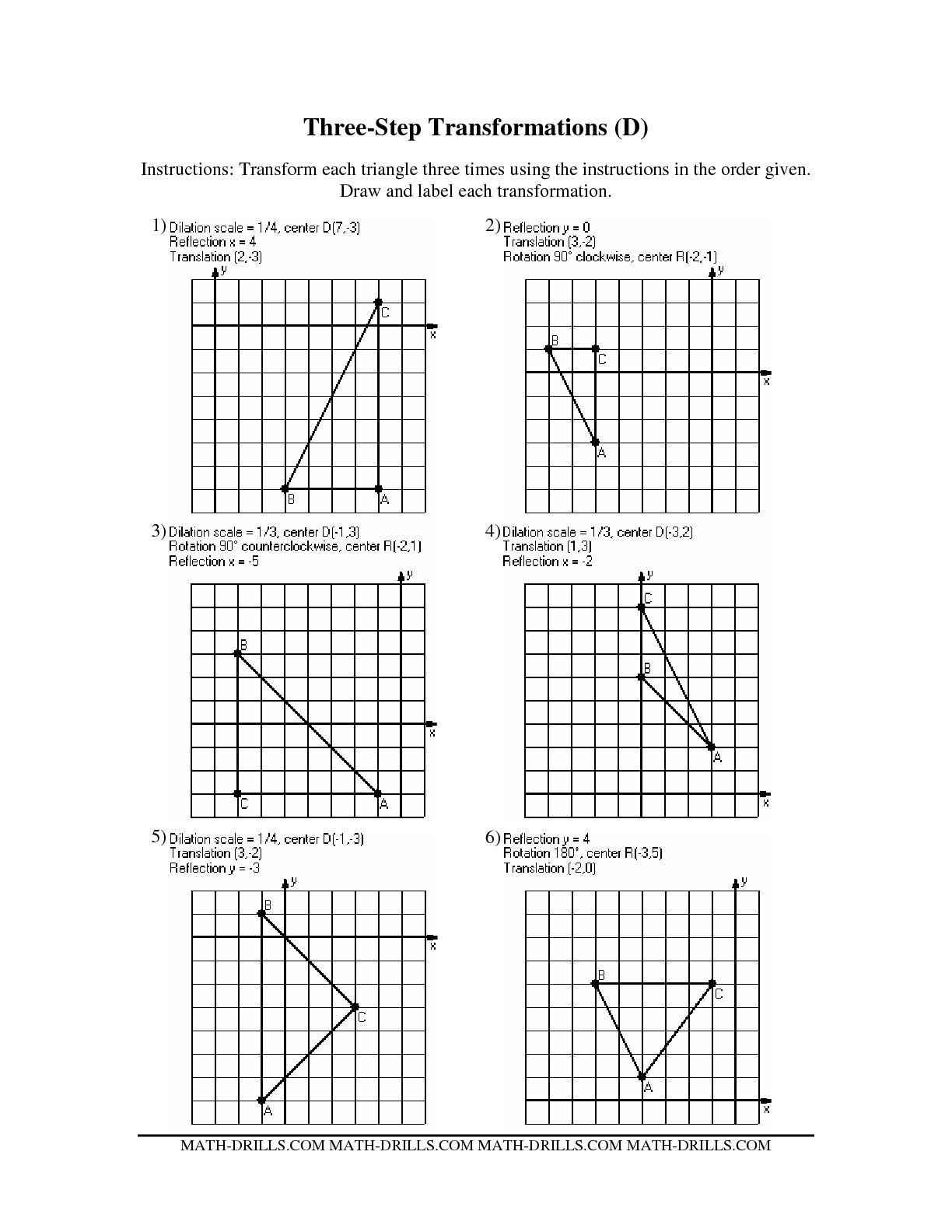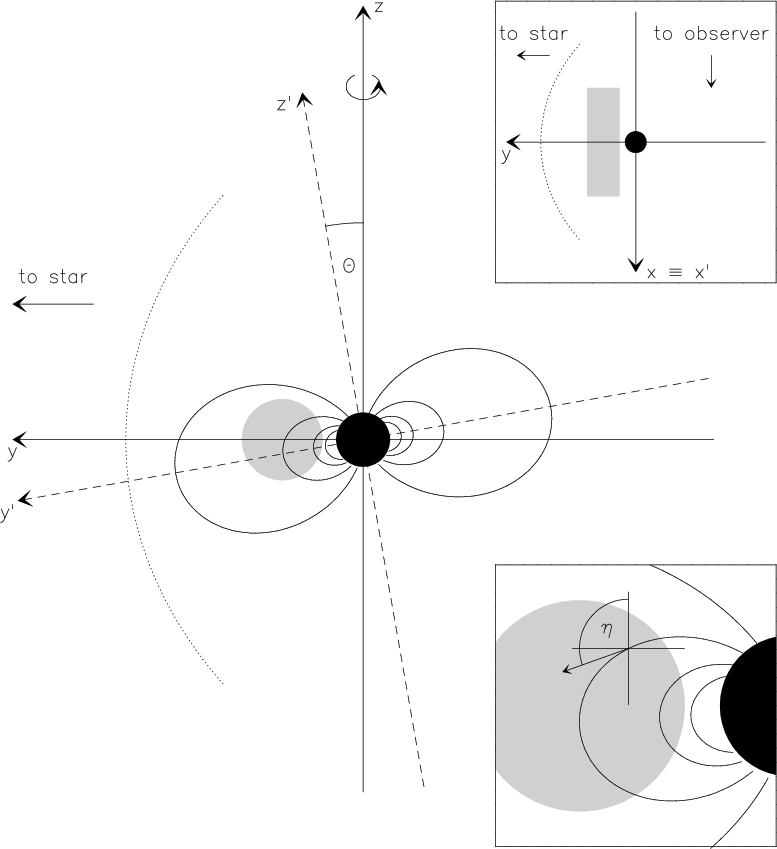Coordinate Plane Transformations Worksheets
Are you a math teacher or a parent looking for engaging and practical resources to help your students learn about coordinate plane transformations? Look no further! Our collection of worksheets is designed to provide a comprehensive understanding of this topic, making it perfect for middle school and high school students.
Table of Images 👆
More Other Worksheets
Kindergarten Worksheet My RoomSpanish Verb Worksheets
Cooking Vocabulary Worksheet
DNA Code Worksheet
Meiosis Worksheet Answer Key
Art Handouts and Worksheets
7 Elements of Art Worksheets
All Amendment Worksheet
Symmetry Art Worksheets
Daily Meal Planning Worksheet
What are coordinate plane transformation worksheets?
Coordinate plane transformation worksheets are educational tools used to help students practice and understand how to apply different transformations, such as translation, rotation, reflection, and dilation, on points and shapes in the coordinate plane. These worksheets typically include problems that require students to perform the transformations and identify the resulting coordinates or shapes after the transformation has been applied. They are a valuable resource for reinforcing mathematical concepts and improving spatial reasoning skills.
What is the purpose of studying coordinate plane transformations?
Studying coordinate plane transformations helps understand how shapes and figures can be moved, rotated, reflected, or resized within a graph. It allows for a visual representation of mathematical concepts and helps in solving problems related to geometry, algebra, and even physics. By mastering transformations on the coordinate plane, students can enhance their spatial reasoning skills and apply these techniques to various mathematical problems and real-world scenarios.
How do you perform a translation on a coordinate plane?
To perform a translation on a coordinate plane, you need to move each point in the figure a certain distance horizontally and vertically. To do this, you add or subtract a constant value to the x-coordinates and y-coordinates of each point. The direction of movement (left, right, up, or down) and the distance of movement determine the specific translation you are applying. The new coordinates of the points after the translation will represent the new position of the figure on the coordinate plane.
What is the difference between a reflection and a rotation in terms of coordinate plane transformations?
A reflection is a transformation that flips a figure over a line, creating a mirror image, while a rotation is a transformation that turns a figure around a fixed point by a certain angle. In the coordinate plane, reflections involve flipping points across a line of reflection, while rotations involve moving points around a fixed point called the center of rotation, based on the specified angle of rotation. Essentially, a reflection changes the orientation of a figure across a line, whereas a rotation changes the position of a figure around a point.
How do you determine if a figure has been enlarged or reduced in a coordinate plane transformation?
You can determine if a figure has been enlarged or reduced in a coordinate plane transformation by comparing the corresponding sides of the original figure and the transformed figure. If the corresponding sides of the transformed figure are longer than the original figure, it has been enlarged. Conversely, if the corresponding sides are shorter, it has been reduced. Additionally, you can calculate the scale factor by dividing the length of a side of the transformed figure by the length of the corresponding side of the original figure. A scale factor greater than 1 indicates enlargement, while a scale factor less than 1 indicates reduction.
How can you identify the image of a point after a specific transformation is applied?
To identify the image of a point after a specific transformation is applied, you would need to apply the transformation rules, such as translation, rotation, reflection, or dilation, to the coordinates of the point. By following these rules and performing the necessary calculations, you can determine the new position of the point after the transformation has been applied.
What are some common types of coordinate plane transformations?
Some common types of coordinate plane transformations include translation, rotation, reflection, and dilation. Translation involves moving the entire figure along a specified direction by a certain distance, while rotation involves rotating the figure around a fixed point by a given angle. Reflection is the mirror image of a figure across a line called the line of reflection, and dilation involves expanding or contracting the figure with respect to a fixed point called the center of dilation. These transformations are fundamental in studying geometry and are used to manipulate and analyze shapes in the coordinate plane.
How can you describe a coordinate plane transformation using words or an equation?
A coordinate plane transformation involves changing the position and orientation of a shape or graph on a coordinate plane. This can be described using a general equation for a transformation, such as \( P'(x,y) = (x+a, y+b) \), where \( P'(x,y) \) is the new position of a point on the plane after moving it \( a \) units horizontally and \( b \) units vertically. This equation represents a translation, where the shape is shifted but not rotated or resized. Other types of transformations include rotation, reflection, and scaling, each with its own mathematical representation.
What are the rules for performing a dilation on a coordinate plane?
To perform a dilation on a coordinate plane, you need to choose a center of dilation and a scale factor. The center of dilation serves as the point about which the dilation occurs, and the scale factor determines how much the figure is increased or decreased in size. To dilate a figure, you simply multiply the coordinates of each point by the scale factor with respect to the center of dilation. If the scale factor is greater than 1, the figure will be enlarged; if it is between 0 and 1, the figure will be reduced. Remember that the direction of the dilation is determined by the location of the center of dilation and the sign of the scale factor.
How can coordinate plane transformations be applied to real-life situations?
Coordinate plane transformations can be applied to real-life situations in various ways, such as in graphic design to create symmetrical patterns, in architecture to plan and design buildings, in video game development to create realistic movements of characters or objects, in navigation to track the position of vehicles or ships, and in robotics to program movements and behaviors of robots. These transformations help in visualizing, analyzing, and manipulating spatial information to solve problems efficiently in diverse fields.
Have something to share?
Who is Worksheeto?
At Worksheeto, we are committed to delivering an extensive and varied portfolio of superior quality worksheets, designed to address the educational demands of students, educators, and parents.

































Comments